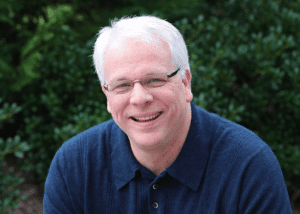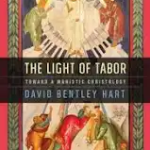The Color of Compromise: The Truth about the American Church’s Complicity in Racism
Jemar Tisby is the author of the much talked about book, The Color of Compromise. Tisby also serves as president of The Witness: a Black Christian Collective, cohosts the Pass the Mic podcast, and is a doctoral candidate in history at the University of Mississippi.
The interview was conducted by David George Moore. Some of Dave’s videos can be accessed at www.mooreengaging.com.
Moore: I’ve been thinking much of late how C.S. Lewis and George Orwell both believed that words are powerful. You write that “complicity” is not an adequate word to depict the lack of involvement among whites when it comes to race. Would you unpack that some for us? I’m also curious why you still chose complicity in the title of your book and even regularly throughout the book?
Tisby: Further down in that same paragraph I explain, “Even if only a small portion of Christians committed the most notorious acts of racism, many more white Christians can be described as complicit in creating and sustaining a racist society.” So, complicity is a weak word when describing the most extreme and violent manifestations of anti-black racism. I needed to express the idea that “complicity” would not be adequate to describe all white Christian responses in the face of racism. There were plenty of people who claimed to love God but hated their neighbors of color and maliciously acted on that animosity. But the vast majority of Christians, especially laypeople, simply exhibited willful ignorance, apathy, or silence in face of racial atrocities. In this sense, then, complicity is an accurate word to describe the great mass of “moderate” Christians whose inaction permitted a society based on racial stratification to form.
Moore: Your book is clear and convicting. Among white audiences, what are some of the most encouraging things you’ve heard about the book?
Tisby: After a talk I gave about the book, a person who described himself as a “60 year old white man from the South” came up to me with tears in his eyes and said the book was helping him overcome the truncated and distorted view of race and history that he had learned. On countless other occasions, white Christians have sent me messages telling me how they’ve used the book as conversation starters with relatives and friends. Older black Christians who lived through much of the hard history I tell in the book hug me in appreciation for helping to their story. I love hearing stories about groups gathering to discuss the book in community. Most encouraging, my niece who is in third grade did a book report about The Color of Compromise. I had to learn much of this history as an adult, so I’m glad that younger generations can access this information long before I did.
Moore: You’ve spent a lot of time thinking about this issue, not only because of the research for this book, but also because you are in the midst of a PhD program in history. Can you highlight a few things that surprised you in your research, or possibly altered your thinking in some way?
Tisby: The ubiquity of racism has given me pause. I’ve read hundreds of academic books on history and in every single field—labor, gender, politics, military, etc.—race always figures prominently. It disappointed me to observe that almost every time historians highlighted Christianity and race, followers of Christ, at least those with the most social and ecclesiastical power, were almost always on the wrong side of justice.
Not just the breadth but also the depth of racism in the church took me aback. From the moment Christopher Columbus contacted Native Americans, paternalistic ideas of race were at the forefront. He evaluated indigenous people only based on how well they could assimilate to European culture (including their version of Christianity) and what kind of servants they might make. In 1667, the Virginia Assembly made a law re-assuring slaveholders that baptism would not emancipate an enslaved person. That’s more than a century before the political entity known as the United States of America came into being. So, there was never a “great” period of American history when race was not a problem. It is the depth and breadth of racism in the nation and the church that filled me with godly anger and a desire to broadcast these truths to a wider audience in hopes of change.
Moore: How does the separation of the church from so-called political matters affect the issues revolving around race in America?
Tisby: Separating racial issues from the gospel makes it easy for churches and individual Christians to sidestep this pernicious problem. If racism is mainly a civil or political issue, then Christians have no obligation to intervene. Historically Christians have used doctrines such as the “spirituality of the church” to play the role of Pontius Pilate at wash their hands of racism. But Christians in this nation cannot downplay their complicity in racism. History rife with the receipts. In addition to the perpetuation of a racist status quo, the effect of such conflict avoidance is that black Christians have chosen to separate themselves from their spiritual brothers and sisters who seem unconcerned about the injustices racism has heaped upon black communities both past and present. A refusal to embrace a holistic gospel that includes social justice has kept the body of Christ divided along racial and theological lines.
Moore: As you well know, there has been a statement decrying “social justice” which was signed by many evangelical leaders. What, if anything, did they get wrong?
Tisby: The so-called statement on social justice and the gospel got too many things wrong to name them all. Stepping back from the actual document, the intention itself is open to critique. In my estimation, the writers and signatories have responded to an imagined enemy. They have taken the most extreme forms of ideology and transposed them onto brothers and sisters in Christ. They have accused me and others of replacing the gospel with Communist, Marxist ideas of collectivism. I am simply a student of history. When you see how Christians acted in racist ways in spite of, and sometimes because of, their religious beliefs, it leads to certain conclusions to understand about how race and what to do about it. Studying history compels you to focus not just on isolated acts of racial animus but to pay attention to the ways our entire society has been built upon notions of racism and white supremacy.
In general, white Christians think very individualistically overall and especially when it comes to race. Race relations in the church would improve exponentially if more people understood the systemic and institutional manifestations of racism and then acted to counteract those forces.
Moore: It seems that the hyper-individualized understanding of faith among conservative Christians can blind us to the reality of “structures of evil.” What have you found to be most helpful in persuading Christians to consider the reality of structures of evil?
Tisby: I actually think we need to spend a bit less time persuading recalcitrant Christians about the reality of systemic and institutional racism. There is a small but vocal and increasingly aggressive contingent of Christians on the blogosphere and social media who not only resist the idea of structural racism, they attack those who see the issue differently. These people leech away time and energy from more profitable pursuits. I recommend Christians spend more time advocating for the marginalized than attempting to persuade those who merely want to argue. These are spiritual issues, and one must exhibit a level of humility to learn about the ways racism continues to affect the church and the nation, especially if it is a reality that goes against a long-held narrative about how race functions.
That said, there are those who may not agree that structural racism is an issue, but they are open to learning more. In those cases, I start with sources they already trust. So, of course, the Bible is at the top of the list. I point to passages such as Leviticus 19:15, Deuteronomy 16:19, Ezekiel 22:29 and many other verses that speak of injustice occurring on a system-wide level. I also point to other sources such as denominational resolutions about race and confessions of faith that explain the practical implications of biblical commands. From there I move on to other sources such as books on history and sociology.
A last word on persuading Christians about systemic and institutional injustice…white Christians have a great responsibility to help educate other white people in their networks about this issue. Many black Christians will never have the same level of access or trust with white people that other white people have. We will not be able to talk to you uncle or grandmother, your roommate, or co-worker, but you can. In those moments, when only white people are around but another white person chooses to interrupt racism, those are the times when some of the most important anti-racist work happens.
Moore: What are two or three things you hope your readers will take from this book?
Tisby: I hope people understand at least these two themes: 1) racism never goes away, it just adapts and 2) It didn’t have to be this way. If racism is sin, which it is, then we should expect that it will never completely disappear until Jesus returns. But if one’s concept of racism is limited to people donning white robes and hoods and burning crosses on lawns, then you will be tempted to think that racism is largely a problem of the past and relatively rare in the present. Racism has not gone away. It has just gone underground. We must have our ears attuned to the dog-whistles, and sometimes bullhorns, politicians use in their rhetoric. We need to peel back the layers of inequality and ask how racism has excluded scores of people from opportunities. It’s there if we have eyes to see.
Secondly, it didn’t have to be this way. Historians often talk about the concept of “contingency.” It’s the idea that historical circumstances are full of dependent variables. Small changes here or there could have resulted in different outcomes. When it comes to race, this means that a racist society was not inevitable. Although racism is entrenched now, there have always been alternatives when individuals could have made different decisions, more just and equitable ones, that would have led to less racist conditions. This points to the last idea I hope people take away from The Color of Compromise. If it didn’t have to be this way in the past, then it doesn’t have to be this way in the future. We have the opportunity right now to make different and better decisions when it comes to race in the church. We can commit to forging a more racially just future for our children and the household of God. We can refuse to practice a complicit Christianity and instead choose to practice a courageous Christianity.



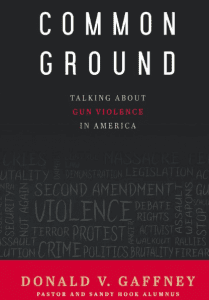

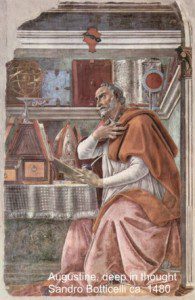
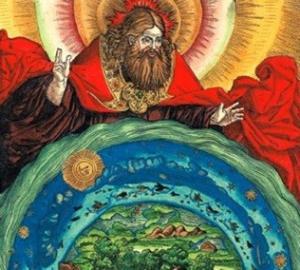 Augustine also considered creation as simultaneous rather over an extended period of time.
Augustine also considered creation as simultaneous rather over an extended period of time.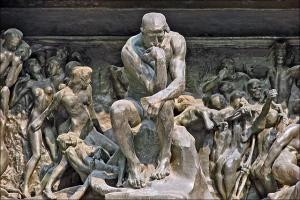
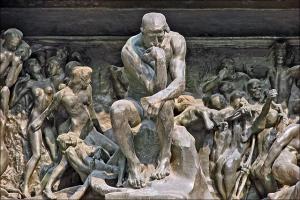 The final segment of the conversation between Heidi Lene Maibom and N. T. Wright addresses the solution to the previous question “what is wrong with the world?” The moderators narrows the question to consider what the solution means for personal responsibility. The conversation covers several points worth consideration. Prof. Maibom emphasizes our obligation to our fellow humans. She begins with the idea that we should “each, in our own way do something every day to make the world a little bit of a better place.” (
The final segment of the conversation between Heidi Lene Maibom and N. T. Wright addresses the solution to the previous question “what is wrong with the world?” The moderators narrows the question to consider what the solution means for personal responsibility. The conversation covers several points worth consideration. Prof. Maibom emphasizes our obligation to our fellow humans. She begins with the idea that we should “each, in our own way do something every day to make the world a little bit of a better place.” (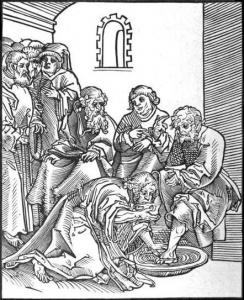 I have been struck this Easter season by the Christian story as one that raises humility and self-sacrificing love for others as the dominant themes. For God so loved the world. This command I give you that you love one another. The Easter story isn’t simply a transaction for our salvation.
I have been struck this Easter season by the Christian story as one that raises humility and self-sacrificing love for others as the dominant themes. For God so loved the world. This command I give you that you love one another. The Easter story isn’t simply a transaction for our salvation.
